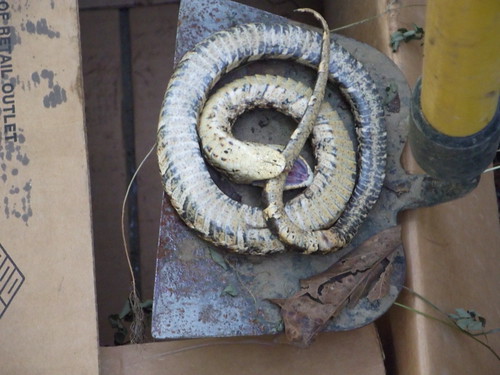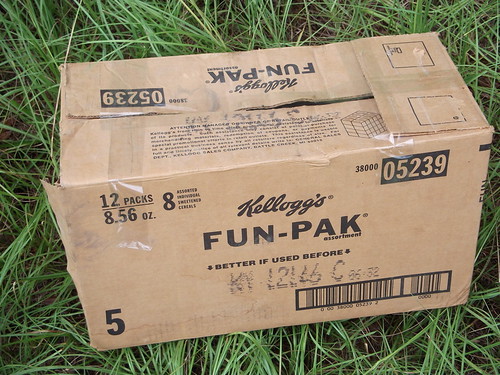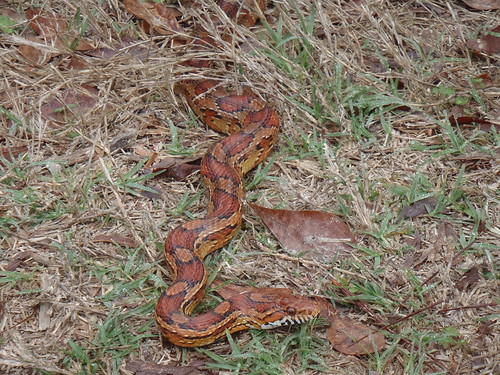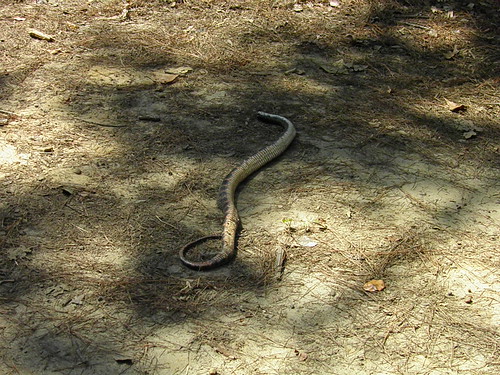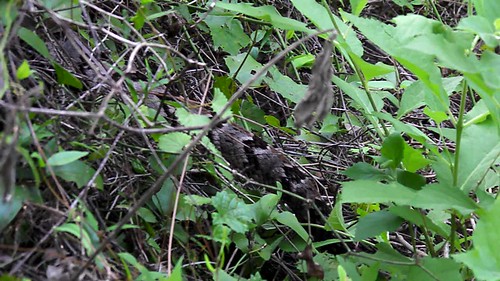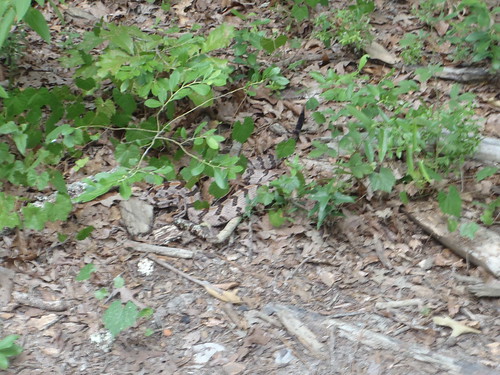I pick it up on a hoe. Most snakes it’s more like raking them into the box with the hoe, but this one’s playing dead: Continue reading
Category Archives: Snakes
What’s in the fun box?
Let’s open it up and see: Continue reading
Snake of the night
Yep, it’s a timber rattler. You can’t see the rattles in this picture (although you can in these other ones by Gretchen), but it had three.
So I put it in a box. It didn’t like that: it really rattled. We drove it to a better spot in the woods, where it’s very happy now.
Good dogs, Yellow Dog and Brown Dog! They notified us but did not try to bite the snake.
Pictures by John S. Quarterman and Gretchen Quarterman, Lowndes County, Georgia, 1 June 2011.
-jsq
Update 8:45 AM 3 July 2011: Fixed picture link and added link to flickr set with Gretchen’s additional pictures.
Copperhead and little dogs
Brown Dog didn’t get bit, but Yellow Dog did. Continue reading
Corn snake
It’s harmless, except to small rodents that live in corn fields. Elaphe guttata is a constrictor. This one was 3 or 4 feet long. They’re native to the U.S. southeast from New Jersey to Texas. I did not know until that day that corn snakes can climb trees.
Here he is stretched out: Continue reading
Yellow jessamine
a high-climbing, woody vine that is known by several names, including Carolina jessamine, poor man’s rope, or yellow jasmin.It smells good. It’s native to the U.S. southeast.
Pictures by John S. Quarterman, Lowndes County, Georgia, 28 February 2011.
-jsq
Snake of the week
What’s in the log?
Are there snakes there?
Why yes, there are snakes. This timber rattler was crawling into the vines: Continue reading
Two Views of a Timber Rattler
Much easier to see in this one: Continue reading
